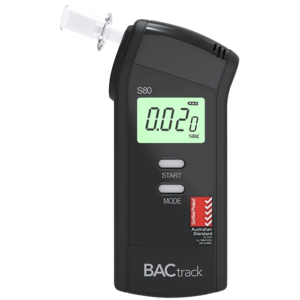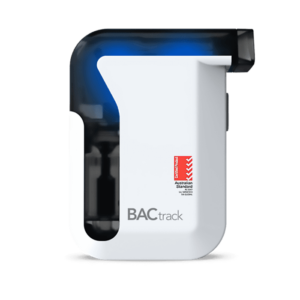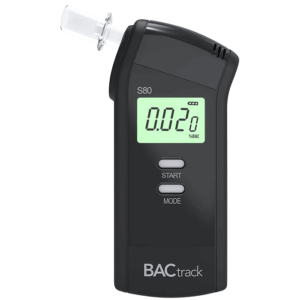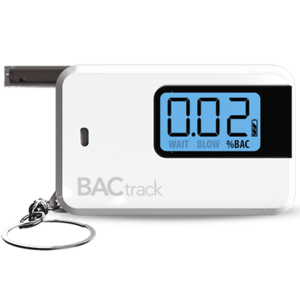Disposable Breathalyser: Definition, How it Works, and How to Use
22 September, 2023

A disposable breathalyser is a portable device that detects Blood Alcohol Content (BAC) in a person’s breath. It works through a chemical reaction that measures the presence and quantity of alcohol. To use it, one should wait 20 minutes after consuming alcohol, blow into the device’s mouthpiece, and check the result. However, it is important to note that these breathalysers may not be admissible as legal evidence in some jurisdictions.
Law enforcement authorities impose severe penalties on individuals who engage in drink driving. These include fines, license suspension, alcohol interlock installation, and even imprisonment. These penalties serve as a deterrent to discourage people from participating in this dangerous activity. To address this problem, single-use breathalysers have gained popularity as they enable individuals to assess their BAC before operating a vehicle. This article will provide information about single-use breathalysers, including their operation and usage.
What is a Disposable Breathalyser
A disposable breathalyser is a portable device designed to detect and measure the alcohol content in a person’s breath. Unlike reusable breathalysers that require recalibration, disposable breath testers are exclusively intended for single-use purposes. These compact and inexpensive devices are commonly utilised by both individuals and organisations for personal or educational objectives.
The primary purpose of single-use breathalysers is to estimate an individual’s BAC quickly and conveniently. This is especially important before engaging in activities like driving or operating machinery. When the user exhales into the breathalyser’s mouthpiece, the device gauges the alcohol content in the breath. This data empowers individuals to make informed decisions regarding alcohol consumption, thereby promoting responsible drinking practices.
However, individuals should recognise that single-use breathalysers may not be admissible as legal evidence, depending on the jurisdiction. These devices are primarily designed for personal use and do not conform to the rigorous standards mandated for evidentiary purposes. Consequently, in cases involving legal ramifications, people should utilise a certified evidentiary device that satisfies the specific requirements dictated by the jurisdiction.
Advantages of Using the Device
- Convenient: single-use breathalysers provide portability and enable individuals to easily carry them around, allowing for on-the-spot testing anytime, anywhere.
- Affordable: these devices offer cost-effective alternatives compared to traditional breathalysers, making them accessible to a wider range of individuals and organisations.
- Easy to use: single-use breathalysers require no calibration or complex setup. Users can simply follow the pack insert to perform a breath test.
- Educational: they serve as a supportive tool to educate individuals about the risks of excessive alcohol consumption and the importance of adhering to legal limits.
- Hygienic: they eliminate the need for cleaning or maintenance, ensuring hygienic and germ-free testing.

How a Disposable Breathalyser Works
A disposable breathalyser operates by employing a chemical reaction. This reaction assesses the presence of alcohol in a person’s breath and determines its quantity. Single-use breathalysers typically comprise a small plastic tube or pouch containing a specialised chemical compound and a colour-changing indicator. The chemical compound interacts with any alcohol in the breath.
Moreover, when a person breathes into the breathalyser, their exhaled breath, which may contain alcohol vapours, encounters the chemical compound inside. Designers specifically engineered this compound to react with the alcohol in the breath. This interaction results in a noticeable chemical transformation, often manifesting as a shift in colour on the indicator within the device.
Furthermore, the underlying process of this chemical reaction operates based on the principle of oxidation. In this context, the chemical compound facilitates the combination of alcohol molecules in the breath with oxygen. The degree of alteration in the colour directly correlates with the quantity of alcohol present in the breath. This feature enables users to determine whether their breath contains an amount of alcohol that exceeds legal limits.
Accuracy and Reliability
The quality of breathalysers can influence their accuracy. Some disposable models, lacking rigorous testing and quality control, produce less dependable readings. Users should choose breathalysers from reputable manufacturers known for creating reliable products. These manufacturers prioritise quality assurance to guarantee accurate and dependable results from their disposable models
Furthermore, the reliability of these devices depends on users following proper usage and adhering to manufacturer instructions. Factors like recent alcohol consumption, the time between drinking and testing, and user technique can influence results. Therefore, individuals must follow guidelines. They should avoid eating, drinking, or smoking before using single-use breathalysers, as these actions can impact accuracy.

How to Use a Disposable Breathalyser
To use a disposable breathalyser, the user should begin by thoroughly reading the pack insert to understand the instructions. Before conducting the test, it is advisable to wait for at least 20 minutes after consuming any alcohol. Then, the person should remove the cap from the breath testing device and blow directly into the mouthpiece.
Upon blowing into the breathalyser, the device will display the user’s alcohol level. The result is typically indicated by either a colour change or a numerical reading. The user should compare the obtained BAC level with the legal drink-drive limit in their jurisdiction for an accurate interpretation. The device provides excellent guidance for personal use, but it may not be as accurate as evidentiary devices.
After completing the test, proper disposal of the breathalyser is crucial. Users should refer to the packaging or instructions for guidance on the recommended disposal method. Some breathalysers may require specific procedures due to their technical credentials. Following the proper disposal guidelines ensures responsible discarding of the device without harming the environment.
Factors that may Affect the Result
Several factors can influence a breathalyser test’s outcome, impacting its accuracy and potentially causing false readings. Firstly, a person’s alcohol consumption plays a significant role. The more alcohol they consume, the higher their BAC becomes.
Secondly, external factors like certain substances or chemicals in the mouth can also affect breathalyser results. For example, if a person has recently used mouthwash or breath fresheners containing alcohol, it can produce a false positive result. Other factors include the individual’s metabolism, body weight, and overall health. Overall, these factors should be considered when interpreting the result of a breathalyser test.
Conclusion
A disposable breathalyser serves as a portable and cost-effective tool to quickly estimate an individual’s BAC for personal use. These devices operate on the principle of a chemical reaction that detects and measures alcohol in a person’s breath. While they are valuable for personal use, people should be aware that they may not be admissible as legal evidence. Proper usage and responsible disposal are essential aspects of using single-use breathalysers to ensure their effectiveness and minimise environmental impact.
Using single-use breathalysers requires considering accuracy and reliability as vital factors. These devices may not be as precise as reusable ones, so selecting a trustworthy manufacturer renowned for dependable products is crucial. Moreover, several factors can affect the outcome of the test. Recent alcohol consumption, the elapsed time since drinking, and the user’s technique can all have an impact. Additionally, external factors, such as substances in the mouth, may influence the test’s accuracy.





























